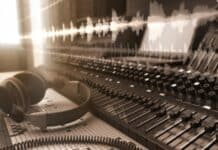
If you’ve ever thought about recording a podcast, you may have felt the task overwhelming.
Understanding the necessary tools, gears, and experience to record a quality podcast might feel like you have to do too much. However, you don’t need many of those things to create and release a podcast that resonates.
Podcasts are widely popular across the globe as a way to entice listeners and attract followers with entertainment and education. There are millions of topics and ways to engage people into becoming fans and following your weekly or monthly content.
There are some essential steps to follow to help you break down the different aspects of a podcast and make it easy to get started. For instance; how to transform your episodes through podcast editing and make it more engaging for your listeners. This way, you’ll have everything you need and know what to do to record a quality podcast.
Step One – An Idea and Point Of View
Finding a new idea and point of view you can discuss at length is the first step to creating your podcast. Mediocre content is a thing of the past; you have to find a way that makes your podcast stand out, why it’s different, and why people should listen.
To help you find that idea and perspective, you should ask yourself some questions:
What will my listeners hear they won’t hear anywhere else?
Where can I capture stories, voices, and perspectives my audience can’t find elsewhere?
Is there another podcast out there like mine? If so, what spin can I create, so mine is different?
Once you’ve established your idea and unique point of view to engage listeners, you’re ready for the next step.
Step Two – Listen to Other Podcasts
Scoping out your competition is crucial to finding out what works and doesn’t. Take time to listen to other podcast hosts who are successful, and try to discover what helps them to engage their audience.
Storytelling and finding your narrative are essential aspects of your podcast recording. Take notes when listening to other podcasts to learn different things like microphone techniques, interview tactics, and more that can help you create your episodes.
Step Three – Episode Outlines
You want your podcast to sound as conversational as possible. People don’t relate to podcasts that sound like headlines and news being given to them. On the other hand, depending on the topics, your audience will want to feel a part of the story and conversation most of the time. Creating an outline is meant more as a guideline to help you through your episodes so you can keep in a direction.
Your outline might just consist of a few notes here and there to help you through your episode. Words to direct you in topics, stories or perspectives you know you want to hit within the episode may also be specific bullet points. If you need it, your outline could also be a word-for-word script. The key points of the outline are to help you communicate your point effectively, keep you from rambling or going too far off-topic, and capture the attention of those listening.
Your outline will significantly impact your podcast’s quality, and it shouldn’t take long to create multiple outlines in one sitting, so you have episodes that are ready in no time.
Step Four – Your Recording Space
The quality of your podcast also comes through in your audio. Find a location in your house where you can prevent a lot of background noise and sounds from interfering. Your voice can bounce off any flat or hard surface and make reverb and echo-y sounds. Try to pick a space that absorbs sounds, like carpeted rooms, or even make a small sound-proof booth with foam panels.
You can create foam panels to go around your microphone. Or, you can invest in a pop filter, which will eliminate the poppy sound like “p” and “t” can make when recording. In addition, it will help keep your audio clear. A pop filter is one of the few pieces of equipment to help ensure a quality podcast.
Step Five – Your Recording Equipment
Your microphone, headphones, and audio software are next for your recording. Now, you can just record by using your smartphone in a closet full of clothes. Still, if you want a more precise audio quality, you will invest in a decent microphone and recording software on your computer or laptop.
It doesn’t take much to get started with decent software and equipment. Audacity is a free, open-source software program you can record on. You can also invest in a relatively inexpensive podcast microphone and some noise-canceling headphones that fit your budget. It is helpful if you research and discover the best ways to utilize your audio software to get a good, clear mix of sound.
Those two pieces are all of the equipment you need. If your business grows and you have the money to do so, you can eventually create a home recording studio for yourself. Then your podcast will reflect high-quality sound and audio.
Step Six – Setting Up Your Intro and Outro
All podcasts have an intro and outro for each episode. Usually, it’s accompanied by background music and your voice introducing and saying goodbye to listeners, which repeats in the beginning and end to help create consistency and recognition.
You can find licensed music for your podcast where you can locate original music related to your brand and recognized by your listeners. Choose licensed music that fits the mood or emotion you want to evoke and drive your point across. You must be licensing your music for commercial use to use it freely within your podcast intros and outros; otherwise, you risk copyright infringement.
Step Seven – Export and Listen To Your Podcast
Export the final recording of your episode in an mp3 format. The mp3 is the most common in the podcast industry standard, utilized on all platforms, including iTunes and Apple podcasts.
It is crucial before you submit that you take time to edit and listen to your recording to ensure you’re presenting a good, clear, and high-quality podcast episode. Find editing software that you can use to put the podcast together, like Audacity. Filter out unusual background sounds, and create a good flow and direction for each episode.
Final Thoughts
Follow these steps to create your podcast episodes successfully, and you’ll see how recording is not overly complex. Without the fancy setup, you can easily create and make quality audio.
Time will be your greatest endeavor when taking on a podcast. Ensure that you take time to do the proper research and editing of your recordings. In addition, you should work to continually improve your content. Finally, if your podcast isn’t getting noticed, you may need to examine and review some of these steps again.









